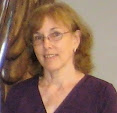- It dampens their spirits—the last thing at-risk students need.
- It stifles their voices. Many of our club members come to us barely literate, but when they are asked to relate their true personal experiences, a voice comes to the fore. One of our most deep-seated instincts is to tell others about something that has happened to us. That instinct must have enhanced early communities’ chances of survival, but we tap into it in our clubs in order to help students connect that narrative voice to writing. It is our job to keep that exposed instinct safe.
- It can lower the quality of the children’s writing. Teacher language generally stomps in with social proprieties and with categories that sweep details under the carpet, both of which distance us from the scenes the children are painting.
- It has no instructional value. You don’t acquire language by copying someone else’s sentences into a final draft. Teacher language carries complex sentences and vocabulary that are not yet part of the students’ proficiency. True, they are sometimes acquired on the writing edge in the club, but they are more the domain of the language arts class.
Friday, December 15, 2017
Teacher Editing, Part I
I think teacher editing is the hardest part of ESL
writing-workshop facilitating for traditionally-trained teachers to learn.
Teacher
editing in Young Writers clubs centers not on everything the teacher knows, but
on the student’s voice. Ideally during teacher editing, students read aloud to the teacher, who helps them listen to themselves. The photo here from REC Primary in Bassa Town, shows what this looks like. I love watching children's growing
awareness of their oral pauses and stops and shouts, and the satisfaction they get from punctuating these. Often, I’ll call an author back to a word that she
has just corrected as she read aloud without noticing that the written form didn’t
match what she said.
Yet what we see more often is students emerging from teacher
editing sessions with whole sentences—even whole series of sentences—heavily crossed
out and replaced by the teachers’ “improved” versions. This bothers me because
I see a frustration in those teachers’ bold stripes drawn across the paper that
I don’t feel when I’m doing teacher editing, but it bothers me more because of
the effect it has on the students:
The point of the writing club is for the students to learn
to record their low-intermediate ESL oral voices on paper so well that anyone
who reads their work aloud can reiterate their storytelling. That means they
must learn to use storytelling devices such as sequence signaling and the appropriate
verb tenses; along with written devices such as paragraphing, inverted commas, and
exclamation marks. People want to read their experiences because they have so
much to say. The literacy and literary skills we are teaching them will be with
them for life. They will transfer to any other language in which they become
literate. On top of all this, do the students have to talk like teachers, too?
Subscribe to:
Post Comments (Atom)


No comments:
Post a Comment
We look forward to hearing from you!